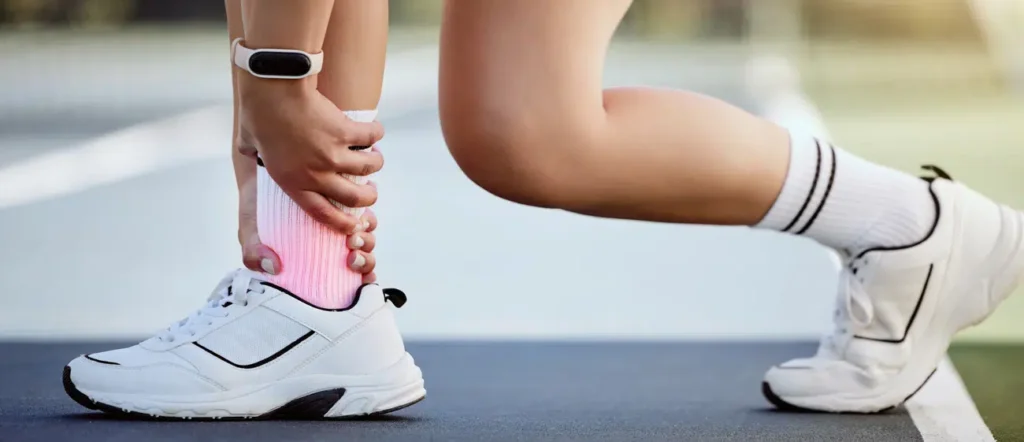How to treat common ankle injuries


What Are the Most Common Ankle Injuries?
The ankle, a major weight-bearing joint, is prone to injuries due to its role in supporting movement and stability during sports, occupational tasks, and everyday activities. Sprains are the most common ankle injuries, especially during activities like basketball, soccer, pickleball, and tennis, and from trips and falls in daily life.
Types of Ankle Sprains:
- Inversion Sprain:
- The most common type occurs when the foot turns inward, and the ankle rolls outward, damaging the lateral ligaments.
- Eversion Sprain:
- Less common, occurring when the foot turns outward and stresses the medial (deltoid) ligament.
- High Ankle Sprain:
- Joint in football: this injury occurs when the foot rotates outward during a tackle, damaging the syndesmotic ligaments that connect the tibia and fibula in the lower leg.
Ankle Anatomy The ankle is a synovial joint that connects the foot to the leg, allowing for flexion, rotation, and weight-bearing movement. Key components of the ankle include:
- Medial Ligament (Deltoid Ligament): Prevents overpronation of the foot.
- Lateral Ligaments: Prevent the ankle and foot from rolling outward.
Other Common Ankle Injuries and Conditions
- Ankle Dislocation: Misalignment of the joint caused by severe trauma.
- Ankle Fractures: Breaks in the bones of the ankle, often requiring immobilization or surgery.
- Osteoarthritis: Degeneration of the joint cartilage, leading to pain and stiffness.
- Gout: A form of arthritis caused by uric acid crystals in the joint.
Signs and Symptoms of a Sprained Ankle
A sprained ankle typically present with:
- Pain in the affected joint.
- Swelling and bruising around the ankle.
- Limited mobility and difficulty bearing weight.
- The severity of swelling is often an indicator of the injury’s extent. If you can still walk on the ankle, it’s unlikely that a bone is broken. However, it’s essential to consult a doctor or orthopedic specialist to rule out severe injuries like a ligament rupture or fracture.
How to Treat a Sprained or Strained Ankle
The RICE method is the gold standard for treating sprained or strained ankles:
- Rest:
- Stop any activity that stresses the ankle and allow it time to heal.
- Ice:
- Apply ice immediately to constrict blood vessels, reducing swelling, inflammation, and pain.
- Compression:
- Compression therapy, such as elastic bandaging or medical devices like the Levamed or Levamed Active, can minimize swelling and promote faster healing.
- Elevation:
- Elevate the injured ankle above heart level to reduce swelling and improve circulation for pain relief and faster recovery.
At Innovative Therapy PC, we provide tailored solutions, including compression therapy products like Levamed braces and bandaging options, to support ankle injuries and aid in recovery. Whether you’re managing a mild sprain or recovering from a more severe injury, we’re here to help you regain strength and mobility quickly and effectively.
